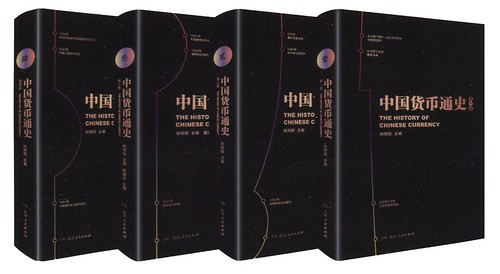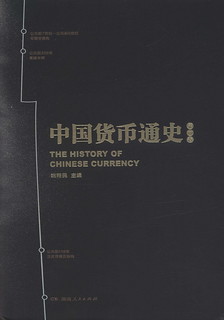
PREV ARTICLE
NEXT ARTICLE
FULL ISSUE
PREV FULL ISSUE
BOOK REVIEW: THE HISTORY OF CHINESE CURRENCYYawei Zhang submitted this review of The History of Chinese Currency. Thank you! -Editor
Review: Zhongguo Huobi Tongshi [The History of Chinese Currency] (4 Volumes)
Changsha: Hunan People's Publishing House, 2018.
姚朔民:中国货币通史(4卷),长沙:湖南人民出版社2018年 From the spade money in pre-Qin states to the e-CNY in the 21st century, the Chinese currency has always fascinated scholars, collectors, and dealers. However, after Peng Xinwei published his milestone work, A Monetary History of China, in the 1950s, academia did not see an updated and revised version for decades until Mr. Yao Shuomin brought the series in 2018. Mr. Yao graduated from Beijing Normal University in 1982. He was the co-founder of the China Numismatic Museum, a councilor of the China Numismatic Society, and the director of the Journal of China Numismatics.
In the introduction, Yao sees his work as popular reading for the general public since
he puts Remarkably, Yao does not cite or refer to any reference in languages other than Chinese. As an indispensable part of the world's monetary history, Chinese coinage has had far-reaching impacts on the coins of Korea, Japan, Ryu Kyu, and Vietnam for centuries, not to mention the economic bonds among the Silk Road powers. Unfortunately, Yao does not include any of those research in English, French, Japanese, etc. For example, in volume 3, he lists the Russo-Chinese Bank's bills citing from a Chinese book Waishang Yinhang Zaizhongguo [Foreign Banks in China], by two Chinese authors in 1996. It is hard to imagine why Yao ignored international research because he has several translations published in the 1980s and 1990s from English, Russian and Japanese. One of them is Smirnova's biography, an expert on Sogdian coins. It seems like he is not a person who can only read and write in his native language.
As for the context, the biggest weakness is the transition period from late-Qing coinage to the final monetary reformation in 1933. In volume 3, which covers this period, Yao discusses the modernization and industrialization of coinage in 95 pages, while the entire volume has 400 pages. The rest are paper bills of the Republic of China and foreign banks in China. Unlike other volumes, volume 3 has two authors: Yao himself and Dai Jianbing. Dai has specialties in paper money in modern China. Dai makes major contributions to this volume (though he does not refer and international research), but his name was placed after Yao. Moreover, the pictures in these volumes are not up to standard. Regarding numismatic books, the most crucial factor is the quality of coinage pictures. A standard coin picture must be in scale, with detailed information (material, weight, diameter, thickness), and in colour if necessary because pictures are integral parts of the research. In Yao's books, a piece of eight Mexican silver dollar is as same as a nickel. Readers can hardly recognize the inscriptions of the peso. Admittedly, Yao makes merit to the research in volume 1. He questions that Marxian economics in China was not Karl Marx's theory but a pseudo-concept distorted and manipulated by the Soviet Union. As a result, the methodology in Chinese monetary research is inappropriate. He reviews the origin of the Chinese currency and concludes that cowries and shells that have long been treated as nascent money in Xia/Shang dynasties are not actual money. So he criticizes previous scholars who intentionally misinterpreted the context in ancient documents, taking those supporting their theory and rejecting those not. He argues that these scholars violated dialectical materialism, overlooking business economics and the development of the entire society. In sum, Yao's work does not even shed a new light on numismatic research on Chinese currency for overlooking up-to-date research from both home and overseas. At this time, Peng Xinwei's outstanding book can be seen as the most and only valuable research in Chinese monetary history.
For more information, or to order, see:
Wayne Homren, Editor The Numismatic Bibliomania Society is a non-profit organization promoting numismatic literature. See our web site at coinbooks.org. To submit items for publication in The E-Sylum, write to the Editor at this address: whomren@gmail.com To subscribe go to: https://my.binhost.com/lists/listinfo/esylum All Rights Reserved. NBS Home Page Contact the NBS webmaster 
|


